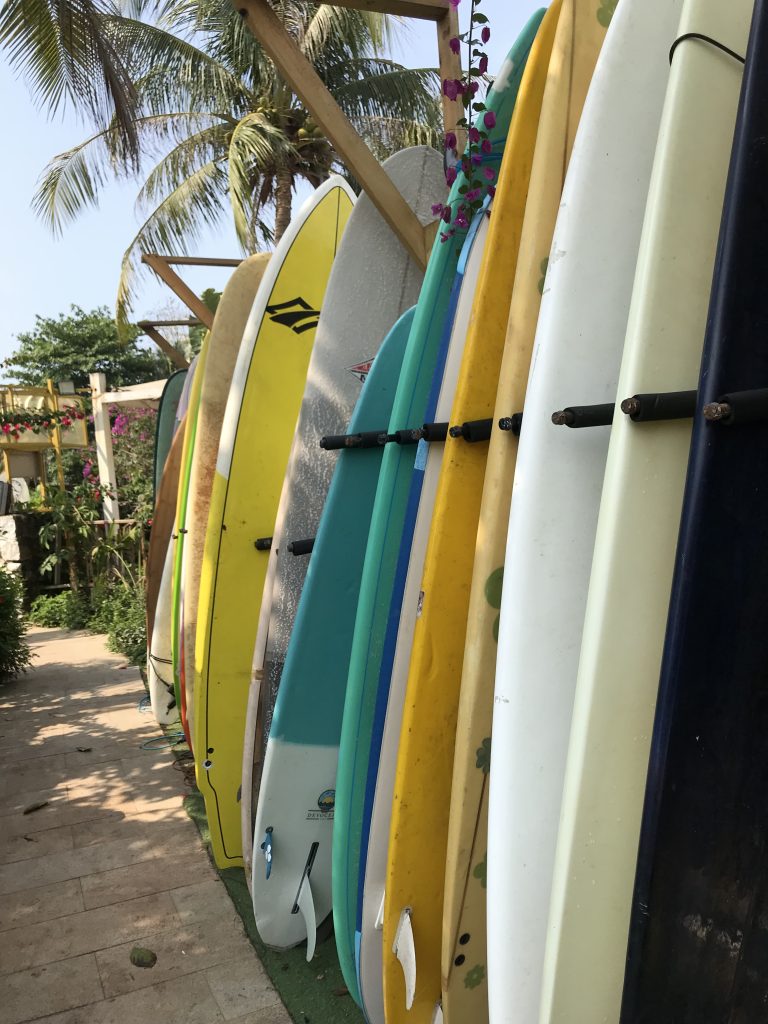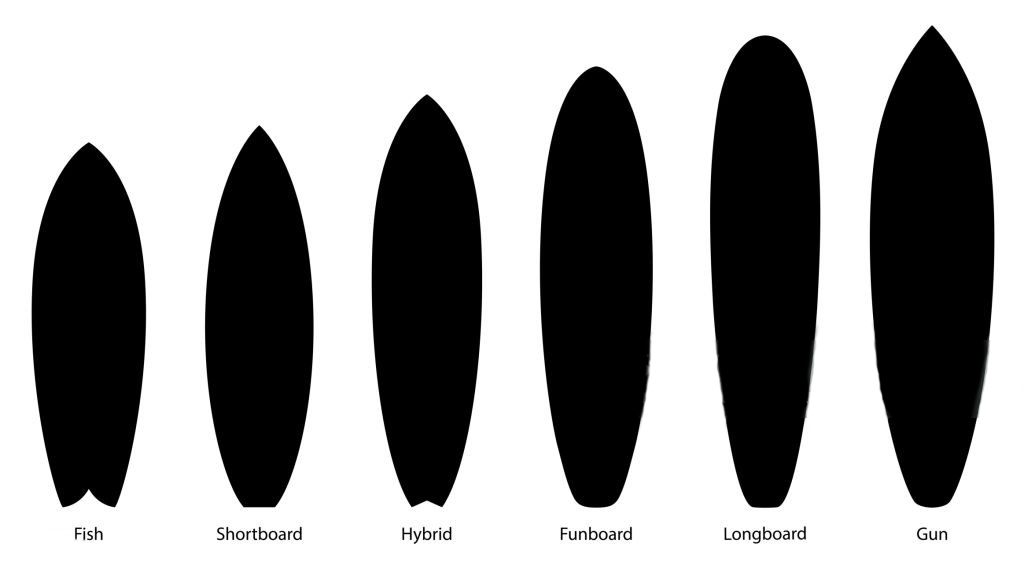So I thought I would switch gears and focus on my other passion: surfing. If you’ve ever walked into a surf shop or scrolled through surf gear online, you know the overwhelming feeling of facing a wall of surfboards—all different lengths, shapes, fins, and designs. Picking the right board isn’t just about looks—it’s about matching your board to your skill level, wave conditions, and the kind of ride you want. Let’s break down the most common surfboard types so you can get a clearer picture before paddling out.
Surfboard Types: The Breakdown
1. Shortboard
- Best for: Intermediate to advanced surfers
- Length: Usually 5’5”–7’
- Vibe: High-performance, sharp turns, speed
Shortboards are built for maneuverability. Their pointed noses and thinner rails let you cut through waves, duck dive easily, and ride more aggressively. They’re not the easiest for beginners because they’re less stable, but if you dream of vertical drops and quick carves, this is your board.
2. Longboard
- Best for: Beginners and cruisers
- Length: Typically 8’–11’
- Vibe: Smooth, classic, and relaxed
Longboards are the granddaddies of surfboards. With lots of volume and stability, they’re perfect for catching small waves and learning the basics. The long nose also opens up the world of nose riding and stylish cross-stepping. Think of it as the Cadillac of surfboards: smooth, steady, and built for cruising. This is the style both me and my husband use. The waves where we live are made for it and make for a relaxing session in the water.
3. Fish
- Best for: Small to medium waves
- Length: 5’–6’6”
- Vibe: Fast and playful
With a wider nose, shorter length, and the classic swallowtail, fish boards glide through mushy waves with ease. They generate speed even in weaker surf, making them a go-to for summer days when the waves aren’t pumping. They’re also fun for carving big, swoopy turns.
4. Funboard / Hybrid
- Best for: Beginners transitioning to intermediate
- Length: 6’6”–8’
- Vibe: The “in-between” option
Funboards combine the paddling power of a longboard with some of the maneuverability of a shortboard. If you’re moving past beginner foamies but not quite ready for a shortboard, a funboard gives you the best of both worlds.
5. Gun
- Best for: Big wave surfers
- Length: 7’–12’
- Vibe: Serious, powerful, and built for charging
Guns are designed for one purpose: handling massive waves. They’re long, narrow, and streamlined to give you speed and control when dropping into powerful surf. If you’re still working on your pop-up, don’t worry about this one just yet—it’s more for pros chasing monsters at places like Mavericks or Jaws.
6. Foamie (Soft-top)
- Best for: Beginners and casual surfers
- Length: 7’–9’
- Vibe: Safe, stable, forgiving
If you’re just starting out, foamies are your best friend. The soft deck makes wipeouts safer, and the extra buoyancy means you’ll catch more waves while learning. Many surf schools and rentals use them for good reason—they’re confidence-builders. My little mean green machine was a foamie and made for a good starter!
Choosing the Right Board
The “best” surfboard really depends on you—your skill level, body type, and the waves you’ll be surfing. Beginners are usually happiest on longboards or foamies, while more experienced surfers might own a quiver (a collection of different boards) to match different conditions.
The key is this: ride what makes you smile. Some days that might be cruising on a log, other days chasing speed on a shortboard. Surfing is as much about joy as it is about progression. Remember the best surfer out there is the one having the most fun!

My husband and I both have longboards and love them. Let us know in the comments what’s your favorite type of surfboard!


